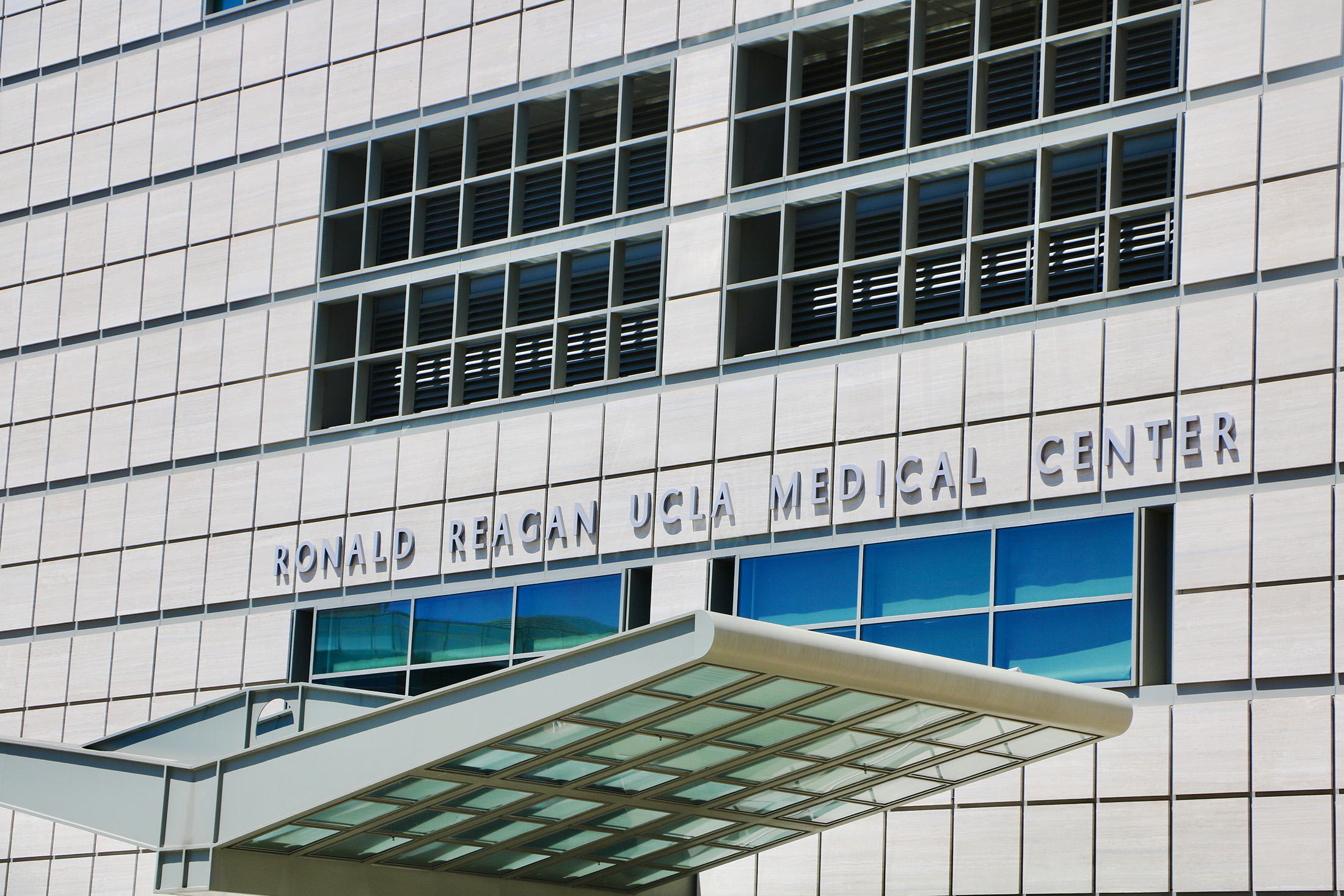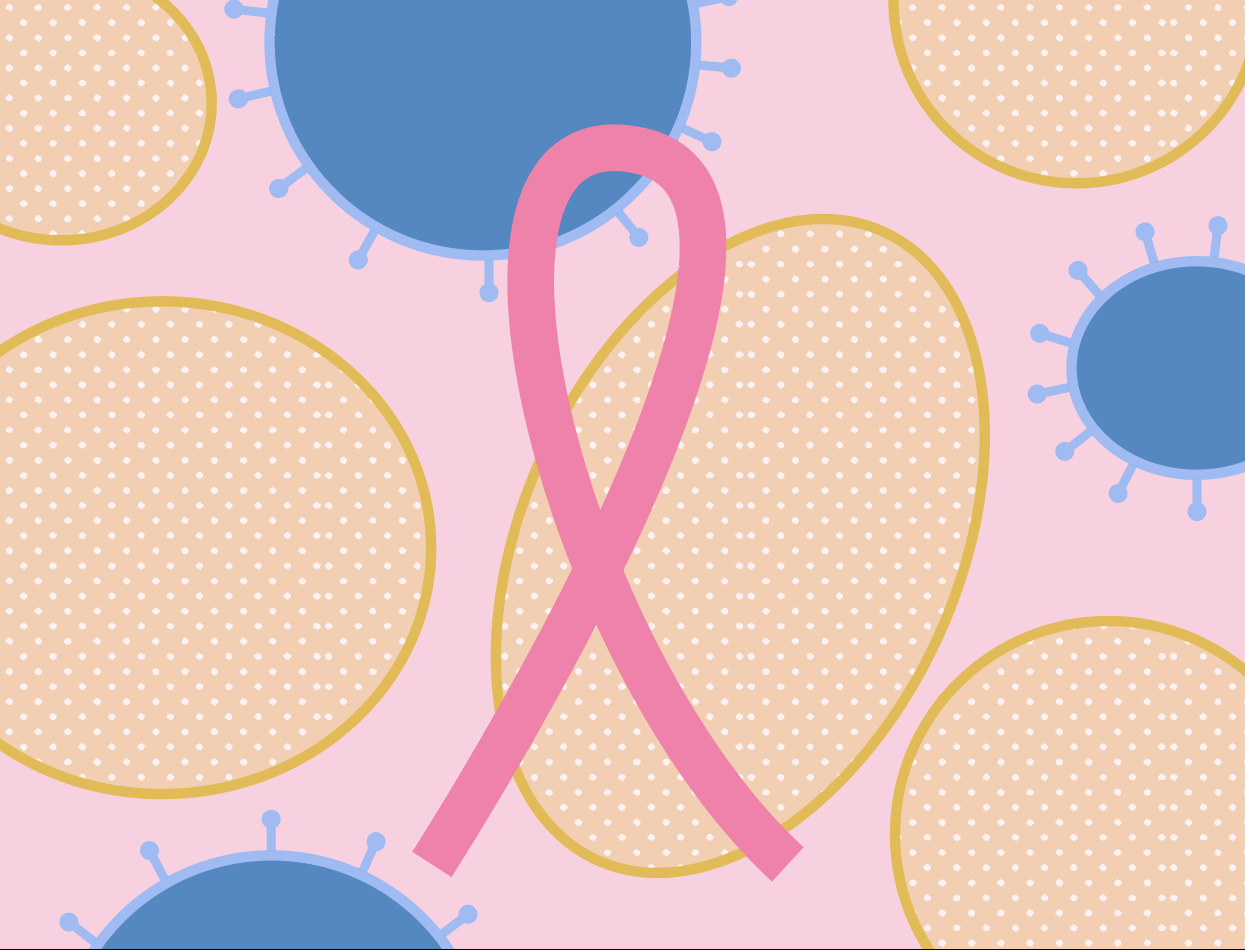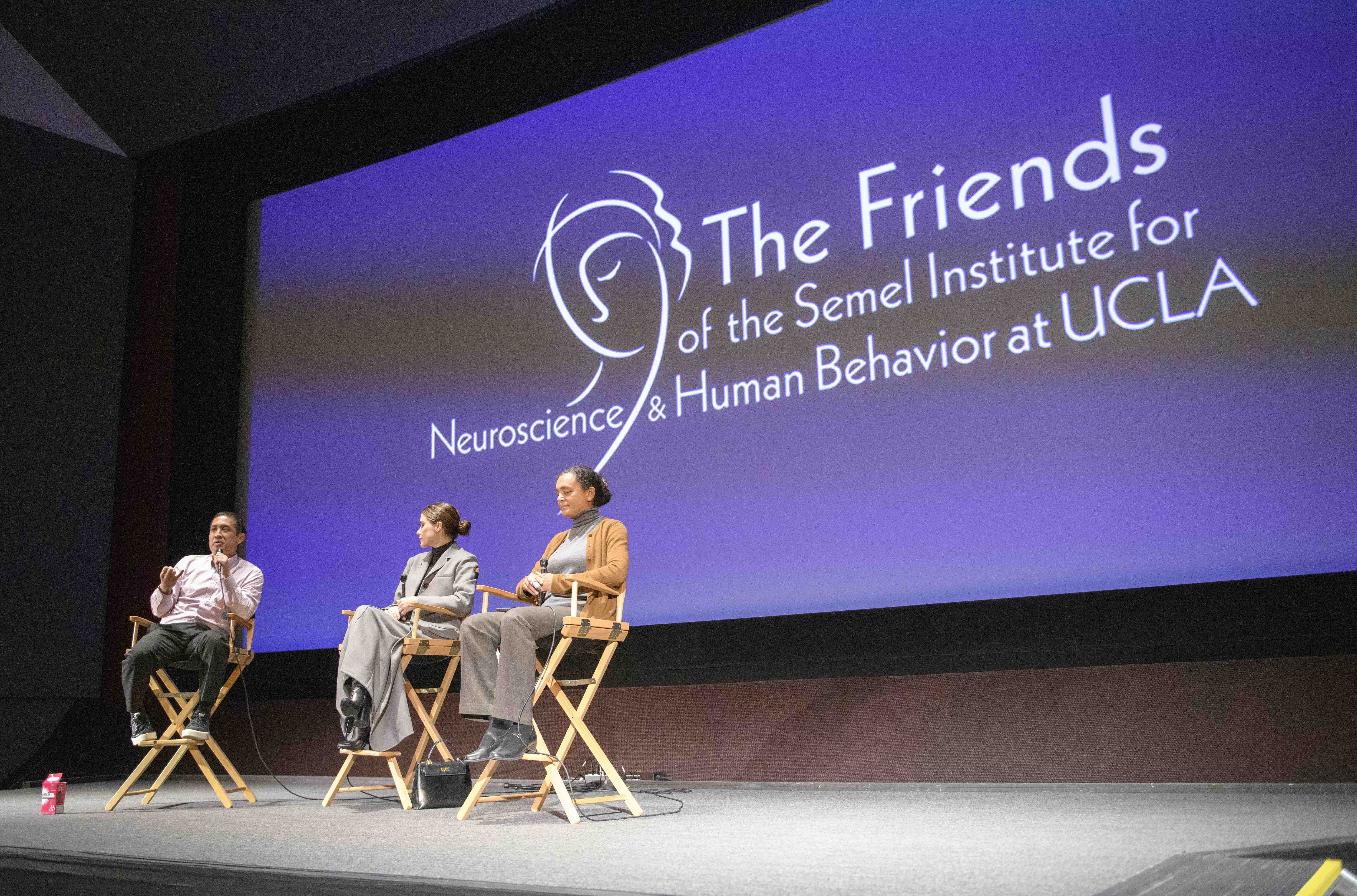Q&A: UCLA’s Dr. Lawrence Benjamin discusses lung cancer screening, risks, treatments

The Ronald Reagan UCLA Medical Center is pictured. November is lung cancer awareness month. UCLA Health’s pulmonology department is one of the top ranked in the world, according to U.S. News and World Report.
By Nicholas Mouchawar
Nov. 30, 2024 5:16 p.m.
This November marks lung cancer awareness month.
To raise awareness about lung cancer, Dr. Lawrence Benjamin, a pulmonologist for UCLA and the Los Angeles Veterans Administration Healthcare system, spoke with Enterprise contributor Nick Mouchawar to discuss the importance of screening for lung cancer, risk factors and patient outlook for the disease.
Benjamin received his medical degree from Washington University in 2016 and did his fellowship in pulmonary and critical care at UCLA in 2022. Benjamin said his work investigates the barriers to lung cancer screening uptake and aims to improve screening rates through analysis of electronic medical records.
This interview has been edited for length and clarity.
Daily Bruin: What inspired you to pursue a career in medicine and led you to specialize in screening lung cancer?
Lawrence Benjamin: I went to college under the impression I wouldn’t go into medicine. I have a parent who is a physician, and seeing their working hours along with not liking blood pushed me away, initially. However, I ended up really enjoying my science courses because I could take the scientific things I was learning and apply it to the bedside. What ultimately won me over was this interpersonal aspect of medicine.
Regarding lung cancer specifically, my interest began during my fellowship where I frequently met veterans unfortunately diagnosed with lung cancer, often at an advanced state. Many of them had smoked, sometimes starting during their service, but they didn’t realize something was wrong until they developed a cough or some pain. By the time they were diagnosed, their cancer was often quite advanced.
DB: Aside from family history, what are the primary risk factors associated with lung cancer?
LB: There are a number of risk factors for lung cancer. The one that most people are familiar with is lifetime smoking history.
There are other risk factors, however, that are very potent, like radon exposure. Radon is a gas that can be released from the earth and when inhaled, can significantly increase one’s risk of developing lung cancer.
There are also a number of environmental exposures. Many people will know about asbestos, which can cause mesothelioma, but actually more commonly causes risk factors for lung cancer more broadly.
DB: Are there any early symptoms of lung cancer, and what proactive steps can students take to support early detection?
LB: Unfortunately, when lung cancer is small and at an early stage, there may not be a ton of symptoms. It is often only when lung cancer is advanced and it’s very large, or it spreads to other parts of the body, that people might develop symptoms. If they have symptoms, certainly, there can be a cough, there can be pain in the chest, someone might cough up blood, there may even be weight loss and night sweats, and other signs that indicate someone is systemically ill, but it’s important to note that many of those symptoms are also more likely to be present when the cancer is more advanced.
For students, what can be done is not necessarily a lung cancer screening. This is currently only recommended for at-risk smokers over the age of 50, so students are likely to not qualify for this screening unless they’ve had a lifetime of smoking, which is equivalent to 20 pack years in their lifetime or a pack a day for 20 years or half a pack per day for 40 years.
While there’s no proactive testing for the younger generation at this time, the best thing for students to do is to alternatively decrease that risk by avoiding that lifestyle modification.
DB: How does early detection of this disease help patient outcomes long-term?
LB: The best evidence we have for how lung cancer screening saves lives is these two large trials that were conducted, one in the United States called the National Lung Screening Trial and one in the Netherlands called the Nelson Trial. In the NLST, the one from the United States, they saw a 20% reduction in lung cancer mortality, and about 12% reduction in mortality overall from lung cancer screening and so the idea is if you catch cancer early, you catch it before someone has symptoms.
While there are a lot of advancements in cancer treatments, early detection is critical because the extent of the disease at diagnosis remains the strongest predictor of outcome.
DB: Could you shed light on myths and misconceptions associated with lung cancer and its risk factors that you hear often?
LB: I do sometimes see that there is unfortunately a stigma around smoking. I think there can be a lot of shame, a lot of victim blaming saying that individuals did to themselves so they deserve this; I think a lot of patients will internalize that and say, “I don’t want to screen.”
The misconception, then, lies in patients believing it is too late to screen and the one thing I would want to say to those individuals is that it’s never too late to be proactive about your health, and there is no doctor in the world who will turn you away. It’s never too late.
As once someone stops smoking, their risk of cancer significantly decreases year over year. Some people might say, “The damage is done. I’m just going to keep smoking.” People might remember because lung cancer was so deadly that there’s no options for treatment but there’s really a lot more options out there today. If somebody remembers that history where cancer was very deadly, I think that that has really changed, and they should really give it a chance, because there might be a number of treatment options that weren’t around when their friends, their family members suffered lung cancer previously.
DB: What specific risks should students be aware of when it comes to recreational vaping and cannabis usage?
LB: This is a great question and one that is actively under investigation. The challenge in determining cancer risk is often that, because cancer often develops over a lifetime, you need to look at people’s risk of cancer over their lifetime to get a better sense of any one risk factor, like vaping or cannabis use can increase a person’s risk of smoking. The popularity of e-cigarette, vaping devices has exploded, especially in the youngest generation, over the last 10, 15 years.
What is still unclear is what that is going to mean for their lung cancer risk over time. There certainly are less chemicals that you’re inhaling in some e-cigarette and some vaping products than you are with combustion tobacco products, so I think some people believe that that may be the case but I do not think that we can conclusively think that they are a safe alternative.
I think our lungs don’t like to inhale anything that’s caustic. I think that we know that both marijuana and vaping certainly increase the risk of viral upper respiratory tract infections, increase the risk of asthma, and I think it’s to be determined what they do to your lung cancer risk. There isn’t as much regulation for a lot of these products, you may not know what is being put in them, and I think that’s a risk that users are going to have to know.
People unexpectedly develop lung problems from inhaling things that we didn’t even know could cause problems down the road. It hurts your immune cells. It hurts these little, tiny hairs called cilia that are meant to get bad gunk up and out of your lungs and protect yourself from infections. Anyone who’s going to use these products, students especially, should have their eyes wide open as to those risks. The jury’s still out on vaping and lung cancer risks.
I actually am very wary of its use as a tool to quit smoking, because often people will be just as nicotine dependent when they switch to e-cigarettes or vaping, some people might actually increase their nicotine dependence because it’s just so easy to sit and puff kind of mindlessly, without those benchmarks to notice that time has passed.
DB: What steps does UCLA take to make lung cancer care accessible and inclusive for diverse communities, like the veteran community and marginalized communities, in Westwood?
LB: One area of growth that many have been enthusiastically trying to promote is increasing access to UCLA, especially for our neighbors who might use Medicaid as their primary insurer. I think there’s been some progress, but there’s still work to be done to kind of increase that access to all patients.
The second piece is outreach. I think UCLA has been reaching out more broadly beyond the insular Westwood community to across the city, you’re seeing that this month, or live events this week there for lung cancer awareness month, where they’re doing community partnered health fairs, educational events, outreach.
DB: Given your work on hospitalization and risk factors, how is lung cancer treatment for a patient approached when they also present comorbidities?
LB: The patient population we’re screening at minimum is age 50 and above, and the reality is that as people age, they will have multiple other medical conditions more and smoking may have put them at risk for other medical conditions, whether that’s heart disease, whether that’s concurrent lung disease like COPD and emphysema. It does impact how safe it is for some people to get some of the follow up treatment like surgery.
Weighing benefit and risk for screening is so important. You want to be sure you’re screening the folks who will get the best benefit and so comorbidity is really important to consider. As people get sicker, as they have more medical comorbidities, the options for treatment do potentially diminish, and it does impact how we are counseling patients, how we’re making recommendations, and what options might be on the table.
DB: Have there been recent advancements in targeted therapy and/or immunotherapy to treat patients? If so, what do these advancements mean for patient outcomes?
LB: There are actually some very exciting advances in lung cancer, in particular on the treatment side. Some of that is immunotherapy, medications that use the body’s immune system to target cancer and help fight it off.
A lot of cancer care is increasingly becoming personalized, so my oncology colleagues are taking a look at the cancer cells they get, they’re sequencing them, they’re looking for markers that we can target, and they now have an armamentarium of personalized and tailored therapies, really to look at improving outcomes.
There’s also a lot of excitement on how we can diagnose cancer with advances like biomarkers, which entails doing a blood test to try to find out what type of cancer something might be. There is some excitement, like in all other parts of life, with AI. For reference, when we find something on a CT scan, we call it a nodule, and we will be able to use machine learning to analyze CT scans and find cancer early and use the machine learning to detect what nodules are benign or cancerous.
DB: If you had to leave students with one important general takeaway about lung cancer awareness, what would it be?
LB: Talk to your friends. Talk to them about smoking, about vaping. I think that the most important thing that we can do is share high quality information, make sure people have the facts so they can make the best decisions for themselves.




